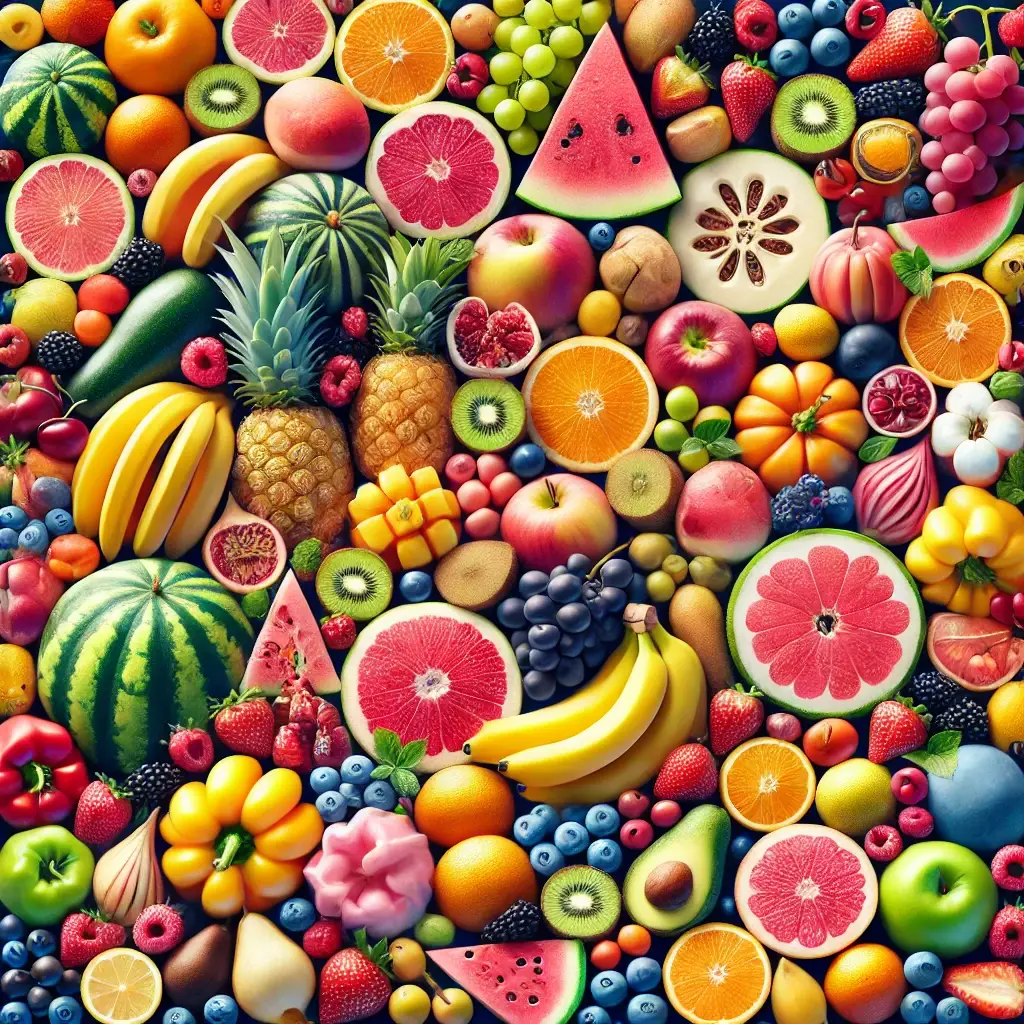Fruits are a cornerstone of a healthy diet, offering a diverse range of flavors, textures, and nutritional benefits. Let’s delve deeper into some notable fruits across various categories:

Rarest Fruit
The cupuaçu is an uncommon fruit indigenous to the Amazon basin.
It’s known for its creamy pulp and unique flavor, often described as a mix between chocolate and pineapple. This exotic fruit is not commonly found outside its native region, making it a delicacy for those who encounter it.
Most Common Fruit
Bananas are among the most commonly consumed fruits worldwide, known for their availability and nutritional value. They are nutrient-dense, easy to digest, and useful for those with poor appetite or digestive issues. Bananas are low in calories, contain fiber and resistant starch, and are satisfying, particularly aiding in weight loss.
Most Expensive Fruit
The Yubari King Melon from Japan is considered one of the most expensive fruits globally, with prices reaching thousands of dollars for a perfectly shaped pair. These melons are cultivated with meticulous care, contributing to their high cost and status as luxury gifts in Japan.
Cheapest Fruit
Bananas are also among the most affordable fruits, widely available and inexpensive in many parts of the world. Their cost-effectiveness and nutritional benefits make them a staple in many households.
Most Nutrient-Rich Fruit
Guava is highly nutritious, offering a rich source of vitamin C, fiber, and antioxidants. It’s also notable for its protein content, providing about 4.2 grams per cup. Regular consumption of guava can contribute to improved immunity and digestive health.
Least Nutrient-Rich Fruit
While all fruits offer some nutritional value, watermelon is lower in fiber and certain vitamins compared to other fruits, though it’s hydrating and provides vitamins A and C. Its high water content makes it a refreshing choice, especially in hot climates.
Biggest Fruit
The jackfruit holds the title for the largest fruit that grows on a tree, with some specimens weighing up to 80 pounds (36 kilograms). It’s a versatile fruit used in both sweet and savory dishes, and its texture makes it a popular meat substitute in vegetarian cuisine.
Smallest Fruit
The Wolffia globosa, or watermeal, is considered the smallest fruit in the world, produced by the tiniest flowering plant. These minuscule fruits are less than a millimeter in size and float on the surface of freshwater bodies.
Highest Calorie Fruit
Avocado is among the highest in calories, providing about 240 calories per fruit, largely due to its healthy fat content. These monounsaturated fats are beneficial for heart health, and avocados also offer fiber and essential vitamins.
Lowest Calorie Fruit
Strawberries are low in calories, with approximately 49 calories per cup, making them a popular choice for those monitoring calorie intake. They are also rich in antioxidants and vitamin C, contributing to overall health.
Highest Protein Fruit
Guava stands out with about 4.2 grams of protein per cup, making it one of the most protein-rich fruits available. Incorporating guava into your diet can help meet protein needs, especially in plant-based diets.
Least Protein Fruit
Fruits like apples and grapes are among those with the lowest protein content, offering less than 0.5 grams per serving. While low in protein, they provide other essential nutrients and antioxidants.
Sweetest Fruit
The carabao mango, particularly from the Philippines, is renowned for its exceptional sweetness, holding a Guinness World Record for the sweetest mango. Its rich, sugary flavor makes it a favorite in desserts and smoothies.
Sourest Fruit
The calamansi or calamondin is known for its intense sour flavor, commonly used in Southeast Asian cuisines. It’s often utilized to add a tangy zest to dishes and beverages.
Fastest Growing Fruit
Bananas are among the fastest-growing fruit plants, with some varieties maturing in as little as 9 months under optimal conditions. This rapid growth contributes to their widespread availability and popularity.
Most Water-Rich Fruit
Watermelon lives up to its name, consisting of about 92% water, making it excellent for hydration. It’s a popular choice during summer months to help maintain fluid balance.
Most Antioxidant-Rich Fruit
Blueberries are celebrated for their high antioxidant content, particularly anthocyanins, which contribute to their health benefits. Regular consumption of blueberries has been linked to improved heart health and cognitive function.
Most Fiber-Rich Fruit
Raspberries provide a substantial amount of dietary fiber, with about 8 grams per cup, supporting digestive health. Including fiber-rich fruits like raspberries in your diet can aid in maintaining healthy digestion and preventing constipation. Unique Rarest Most Common fruits
Least Fiber-Rich Fruit
Grapes have relatively low fiber content, offering about 1 gram per cup, though they are rich in other nutrients. Despite their lower fiber content, grapes provide antioxidants and vitamins that contribute to overall health.
Incorporating a variety of these fruits into your diet can provide a wide range of health benefits, from essential vitamins and minerals to antioxidants and fiber. A diverse fruit intake supports overall health and can contribute to the prevention of various chronic diseases.





